How the M2S Framework Serves as an Extension of EOS
How the M2S Framework Serves as an Extension of EOS
The EOS VTO, or Visionary Traction Organizer, is a central concept from the book Traction: Get a Grip on Your Business by Gino Wickman. The VTO is a tool that helps businesses gain clarity on their vision, goals, and direction, and to effectively communicate these elements within their organization. It is a one-page document that outlines a company's core values, core focus, 10-year target, “marketing strategy,” and other essential components that drive success.
In other words, it defines the foundation of a company in a simple, easy-to-digest way that makes it easy for organizations to adopt.
One thing I have noticed over the years working with companies utilizing EOS is they love developing the VTO - defining who you are, where you’re going, and why anyone should care. But knowing what to do next can be tricky.
In theory, one of the areas of the VTO is called “marketing strategy.” Yet, it solely consists of defining your target market, proven process, and company guarantee. It’s not as much a strategy as it is a focus.
True strategy comes with a road map. This is where the M2S (Marketing-to-Sales) Framework comes into play.
Like most frameworks, we start by helping companies fill in any gaps in the definition of their vision, brand, audience, and data. Then you have to build a road map or strategic plan. Finally, there’s the implementation of the plan.
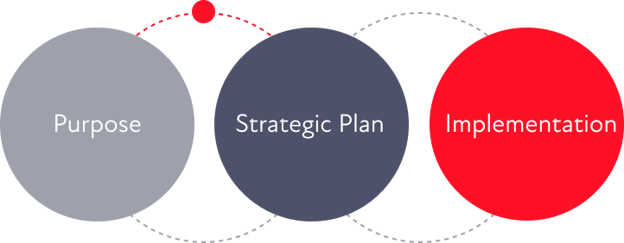
When companies utilize EOS, they have most of the foundational work needed. The VTO provides Step 1. M2S brings you Steps 2 and 3.
So what are these steps?
Strategic Planning
Step 2 is the Strategic Planning phase. Using the M2S Framework, we take the spirit of EOS and balance both aspiration and tactical deployment. We develop a map that follows a customer’s lifecycle:
- Attract the Prospect
- Convert the Prospect to an Opportunity
- Close the Opportunity into a Customer
- Delight the Customer
The M2S Framework challenges businesses to take each of their market segments and identify which tactics they will use at each of these stages, the creative messaging of these tactics, the KPIs that measure success, and any obstacles that keep us from executing.
So let’s say an employment law firm out of Boston has just completed their VTO. They know who they are and where they want to go, but they don’t have a defined plan for getting there.
Here’s what their map may look like:
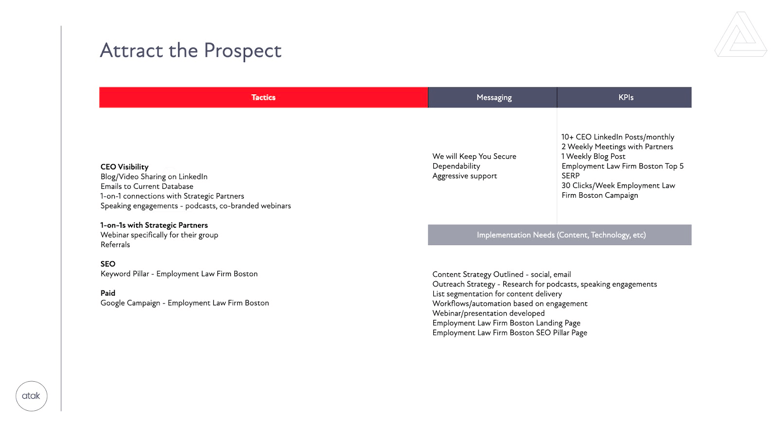
Here, they define the different tactics needed to generate leads. Getting their message out on social media and in front of different audiences, referral relationships, SEO, and Paid Google Campaigns.
Their message is centered around both security for the client but also aggressive support. The KPIs in this stage are more accountability-based or capture top-of-the-funnel metrics. And we recognize that there are a LOT of obstacles towards getting these efforts off the ground.
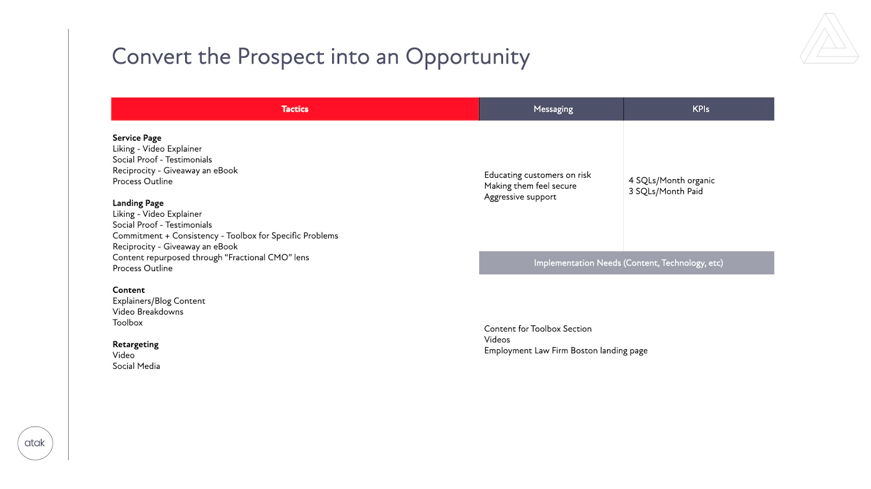
This next stage is about optimizing efforts for conversion. Different landing pages need to be built among a lot of other educational content. Think of this stage as the persuasion stage. How do you get customers to “take the leap”? One approach is to consider the Six Pillars of Persuasion:
Reciprocity: People tend to return favors, giving back when they have received something. This principle can be used to build rapport and trust with others.
Commitment and Consistency: People prefer to be consistent with their words and actions. If someone publicly commits to something, they are more likely to follow through.
Social Proof: Individuals often look to the actions of others to guide their own behavior, particularly in uncertain situations. This principle can be used to encourage desired behaviors by showing others engaging in those behaviors.
Authority: People generally respect and follow the opinions or suggestions of those perceived as experts or authority figures. Demonstrating your knowledge or expertise can increase your persuasiveness.
Liking: People are more likely to be influenced by those they like, trust, or find attractive. Building rapport and finding common ground with others can improve your ability to persuade them.
Scarcity: Perceived scarcity of a resource or opportunity often increases its value in people's minds. By emphasizing the limited availability of something, you can create a sense of urgency and increase its appeal.
Think about these pillars on all sales + marketing communications for this stage. They should lead your messaging.
KPIs should be focused on leads and lead quality. Obstacles are usually content-heavy in the Convert stage.
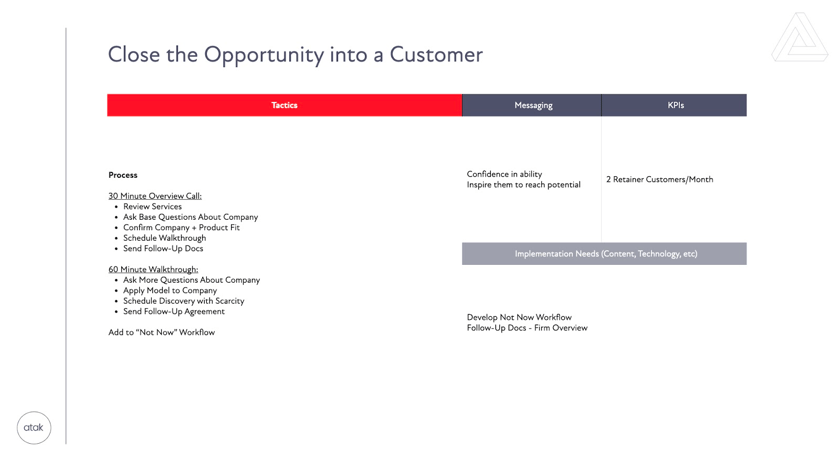
The Close stage should encompass all sales and marketing activity from the time an opportunity comes into the pipeline until they have hit Closed Won/Lost. Typically it’s sales heavy and an area of the process most companies have somewhat defined.
The messaging in the close stage should make customers feel confident that they will get a return on their investment. The KPIs should be revenue + customer focused.
Generally, this stage requires the least amount of obstacles, unless there’s a CRM issue…
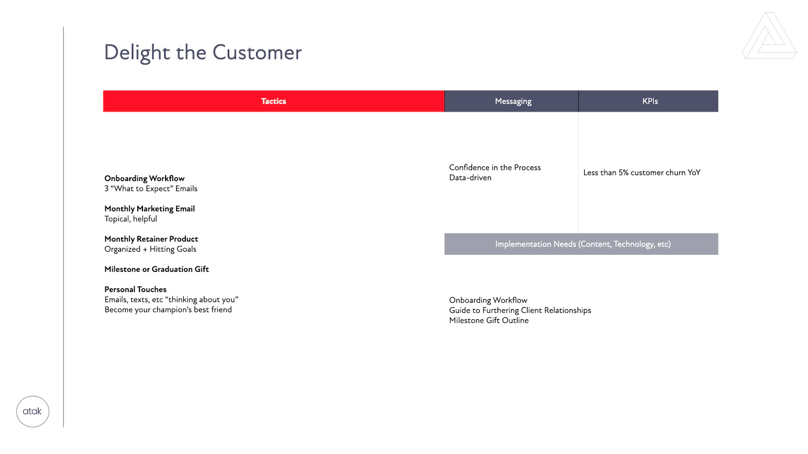
Every company thinks their experience is a Delight and it’s enough. Most often, it’s not. It’s probably “good” and customers are not upset by the customer experience, but getting clients to become evangelists requires an extra level of touch most companies punt on.
The Delight stage tactics are broken down into either educational or experiential. Educational is helping explain why a new technology could be really helpful for the customer, experiential is taking them to The Masters.
Both are important and help build the bond between company + client. KPIs are focused on customer retention and because many companies don’t go the extra mile in this stage, there’s a lot of obstacles left on the table.
While we define the Customer Lifecycle as:
- Attract the Prospect
- Convert the Prospect to an Opportunity
- Close the Opportunity into a Customer
- Delight the Customer
…it could also read:
- Lead Generation: Attracting the Prospect
- Conversion Rate Optimization: Converting the Prospect to an Opportunity
- Sales Enablement: Closing the Opportunity into a Customer
- Customer Success: Delighting the Customer
This simple plan touches on all areas of Revenue Operations: marketing, sales, and customer success. It provides a perfect road map towards how to market your business each month.
However, it also identifies the gap many companies cannot get past:
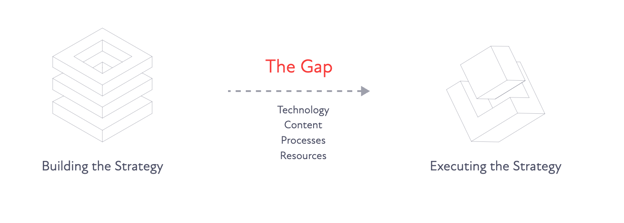
Implementation
Implementation starts by reviewing the obstacles laid out when building your M2S Map. Using the example above, we see there’s a lot of implementation work needed.

Broken down section-by-section, you need to identify the specific tasks needed to get done, the responsible parties, the deadline, and the current status of the project. Here’s an example of what the “Content” section could look like in this context:
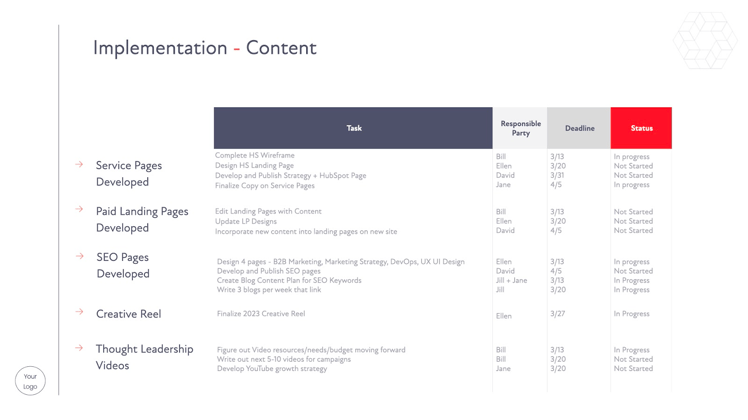
As you can see, this is where all of the ideas turn into a poignant plan of action with timelines, project leads, and clarity for everyone involved.
To review, there’s 3 stages to any growth plan:
- Foundation
- Strategic Planning
- Implementation
EOS does an incredible job of helping with Step 1. Using the M2S Framework, companies utilizing EOS can take their growth plan to the next level.
It’s simple, clear, organized, and combines both ideas + execution. To learn more about how the M2S Framework can provide the right structure to your revenue operations, click here to learn more about the Framework or download a template for yourself.



